Alien-looking “Island of Bliss” – enter a different dimension at Socotra (25 pictures)
Enter a different dimension at Socotra, an unusually peculiar-looking world that was long ago called “The Island of Bliss.” Located off the Horn of Africa, in the Indian Ocean, Socotra is about 150 miles away from Somalia and the threat of real-day pirates; it’s a little over 200 miles away from its mainland Yemen. And the landscape makes it “the most alien-looking place on Earth.” Although Socotra has wide sandy beaches rising to limestone plateaus full of caves, some 4.4 miles in length (7 km), wind-swept cliffs and mountains over 5,000 feet high, the island’s iconic image is of the Dragon’s Blood tree; it’s deep red resin was once considered to be ancient dragon blood. Some people have suggested that Socotra might have been the original Garden of Eden. Currently every single Trip Advisor tourist review rated Socotra as “excellent.” Of course, there are high security threats like kidnapping and terrorism; the US State Department warned Americans against traveling to Yemen. In 2011, Somali pirates were using the island as a fuel base. Yet tourists call it a “hidden gem” for those adventurous souls not seeking a luxury resort. Most of us will never visit this out of this world island of Socotra.
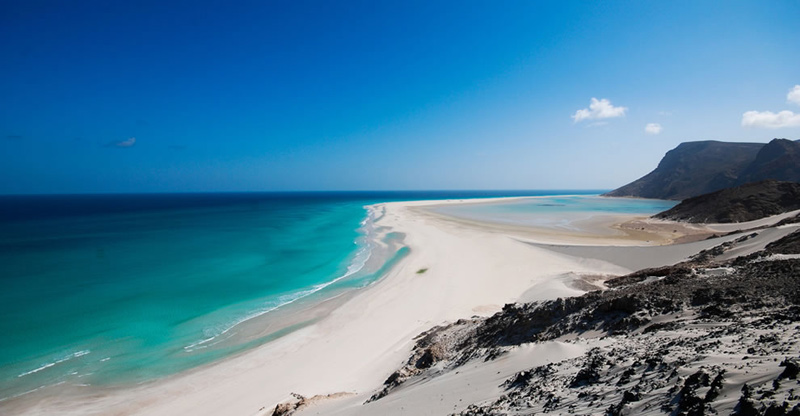
National Geographic said, “Socotra was once a legendary place at the edge of maps of the known world. For sailors it was fearsome, with dangerous shoals, ferocious storms, and residents who were believed to control winds and turn ships toward shore for capture and plunder. Today Socotra’s rich biological diversity brings new explorers, who hope to learn its secrets before the modern world changes it forever.” Photo by pmedicus
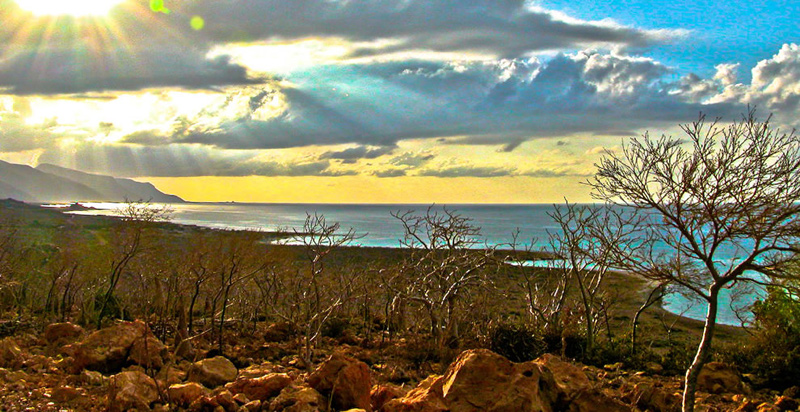
There are few roads, even if Socotra is considered an ecotourism and adventurer destination. Currently every single review rated Socotra as “excellent.” Of course, there are high security threat concerns and the US State Department warned against traveling to Yemen. Socotra is Located off the Horn of Africa, about 150 miles away from Somalia and the threat of real-day pirates. In 2011, Somali pirates were using the island as a fuel base. Its mainland, Yemen, is a little over 200 miles away. Photo by Osama Al-Eryani
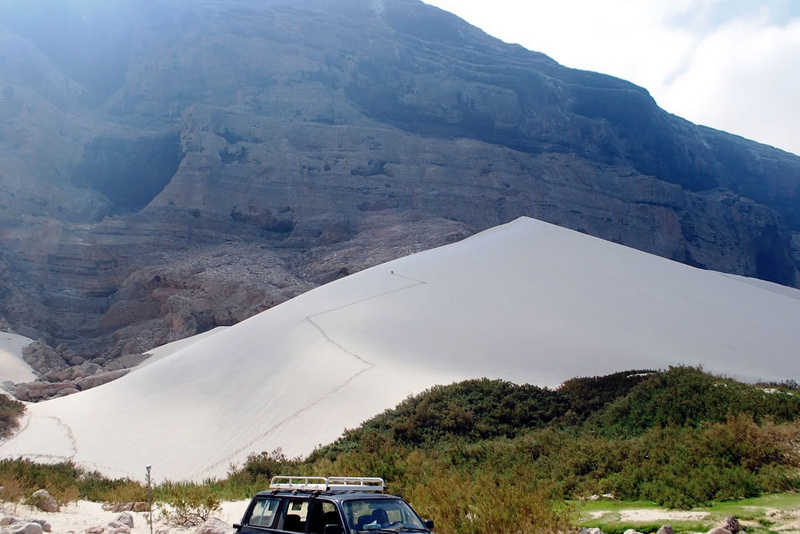
Arher dunes and Hoq cave. The Socotra Project wrote, the “Archipelago used to serve as a prison to persons who were for any reasons unwelcome on the Yemeni mainland. For more than four months every year, Socotra used to be completely inaccessible due to strong winds and high waves during the monsoon season. In 1999, this natural barrier was broken by opening the airport on the island.” Photo by Gerry & Bonni
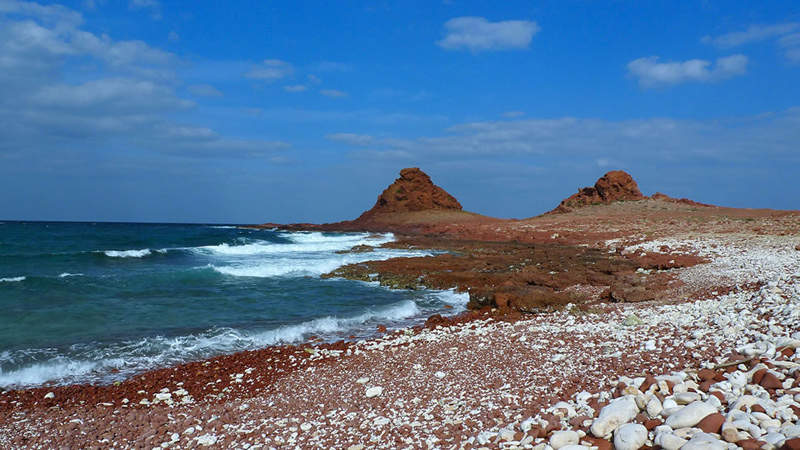
Dihamri Beach. Photo by Cesare Dolzani
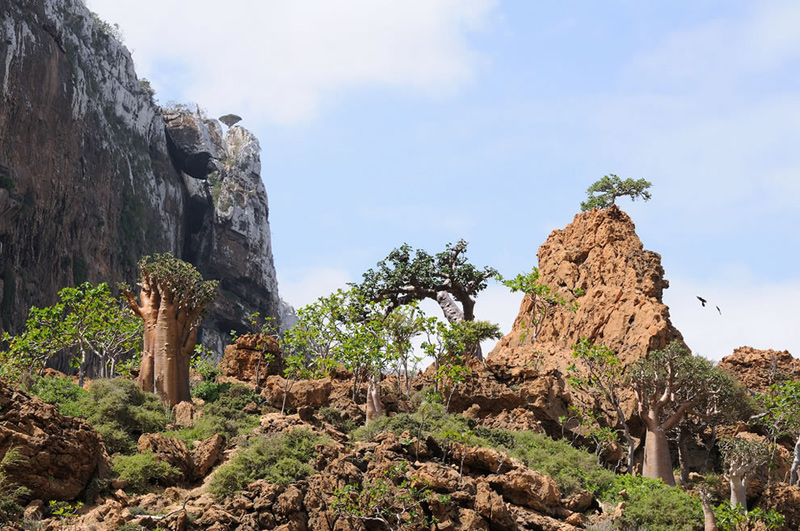
In 2008, it became a UNESCO World Heritage Site. This image shows below Hoq cave. Photo by Stefan Geens
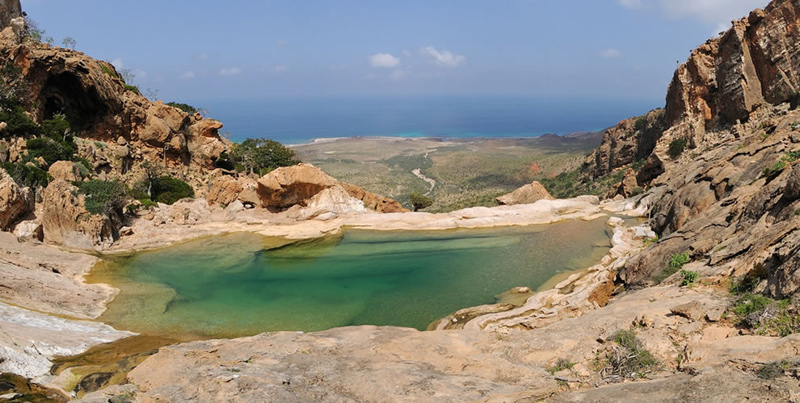
Homhil plateau watering hole. The photographer wrote, “This place is so special. The watering hole is very like an infinity pool, its cool clear water letting you stand at the edge on a ledge that gives you a spectacular view of the northern coast of Socotra.” Photo by Stefan Geens
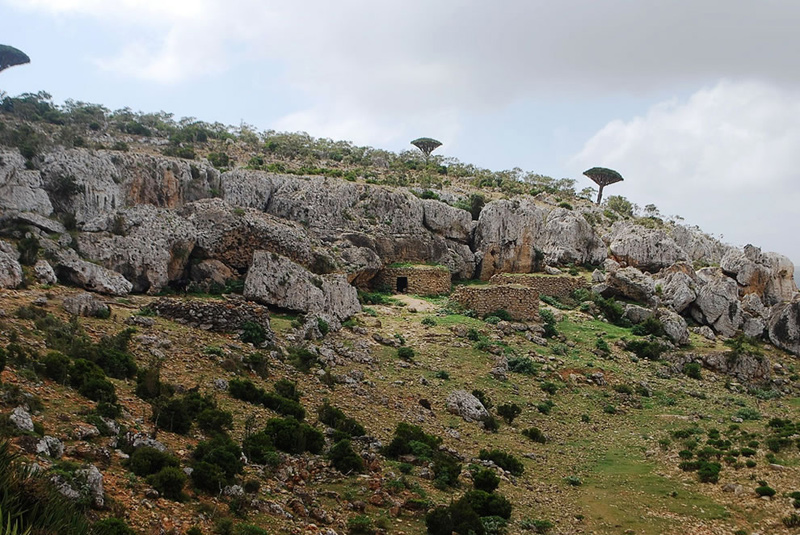
Pens for cattle and goats. According to Wikipedia, “Though the dragon’s blood tree is highly widespread, it has become fragmented due to the development that has occurred in its habitats. Many of its populations are suffering due to poor regeneration. Human activities have greatly reduced the dragon’s blood population through overgrazing, and feeding the flowers and fruits to the livestock of the island. One of the species’ greatest threats is the gradual drying out of the Socotra Archipelago, which has been an ongoing process for the last few hundred years. This has resulted in non flourishing trees, and the duration of the mist and cloud around the area seems to also be decreasing. Increasing arid environments is predicted to cause a 45 percent reduction in the available habitat for Dracaena cinnabari by the year 2080.” Photo by Gerry & Bonni
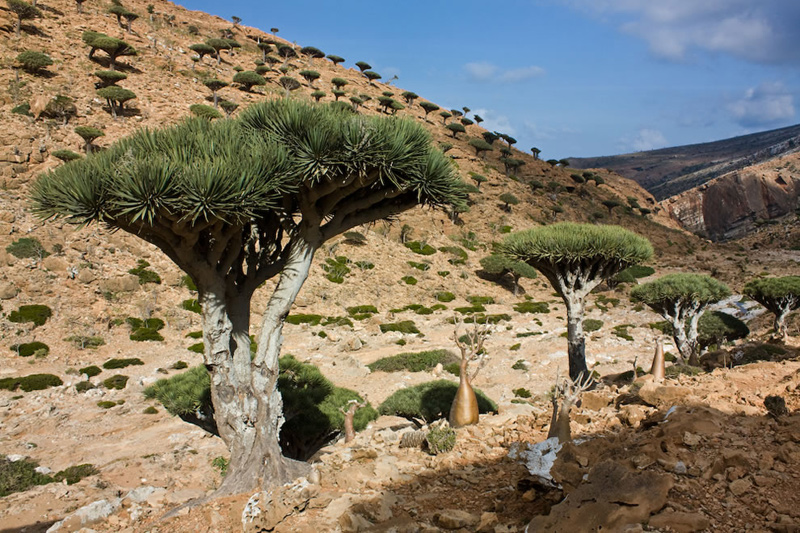
The dragon’s blood tree is the symbol of the island. The photographer noted that these amazing trees “grow in forests of huge mushrooms on the mountains over Socotra.” Although it does rain, it’s generally light and many plants here rely on mists for water. Wikipedia states, “The root yields a gum-resin, used in gargle water as a stimulant, astringent and in toothpaste. The root is used in rheumatism, the leaves are a carminative. The trees can be harvested for their crimson red resin, called Dragon’s blood which was highly prized in the ancient world and is still used today. Around the Mediterranean basin it is used as a dye and as a medicine, Socotrans use it ornamentally as well as dying wool, gluing pottery, a breath freshener and lipstick. Because of the belief that it is the blood of the dragon it is also used in ritual magic and alchemy….The local inhabitants of the city in the Socotra Island use the Dragon’s blood resin as a cure-all. They use it in general wound healing, as a coagulant, cure for diarrhea, for dysentery diseases, for lowering fevers. It is also taken for ulcers in the mouth, throat, intestines and stomach.” Photo by Alexandre Baron
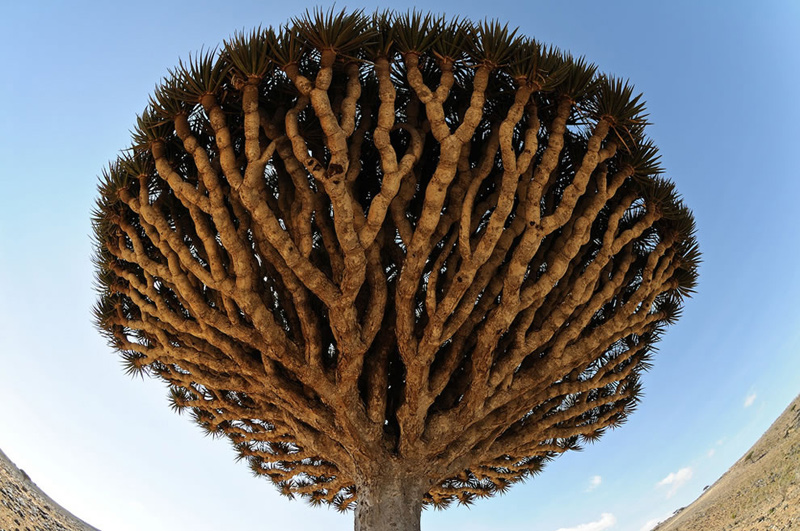
The photographer noted, “I couldn’t get enough of these trees. I wanted to document as may as possible to see if I could figure out their secrets.” Although there are hundreds upon hundreds of dragon’s blood trees on the island, sadly it is believed that these trees are threatened. “Although most of its ecological habitats are still intact, there is an increasing population with industrial and tourism development. This is putting more pressure on the vegetation through the process of logging, overgrazing, woodcutting and infrastructure of development plans.” Photo by Stefan Geens
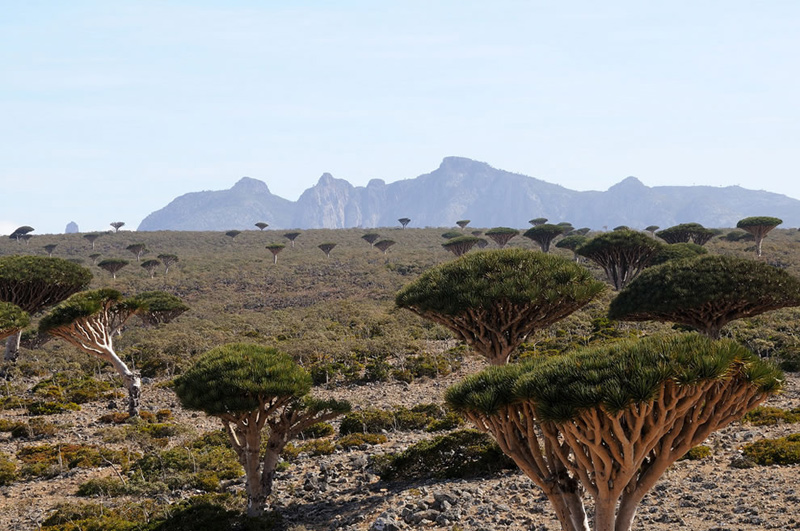
Dragon’s blood trees dotting the Haghier massif and Diskum plateau. Vanity Fair wrote, “The terrain was spectacular in every direction: towering mountains of granite with steep pointed peaks; stunning canyons and gorges; deep pools of fresh water ringed with palm groves; sand dunes that seemed a mile high.” Photo by Stefan Geens
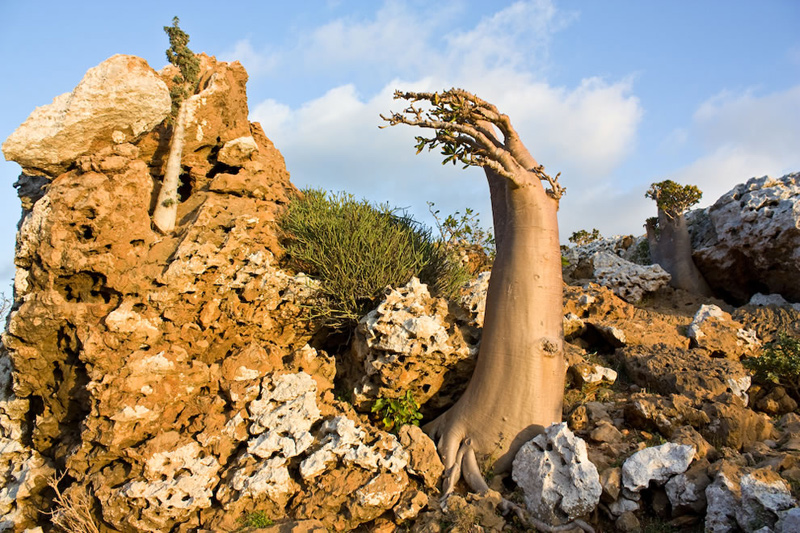
Socotra endemic tree species are so peculiar, it’s little wonder it feels like another planet to visitors. The photographer wrote, “This other planet is situated in the Arabian sea, south of Yemen, east of Somalia. There, bizarre bottle-shaped trees grow directly over rocks.” Photo by Alexandre Baron
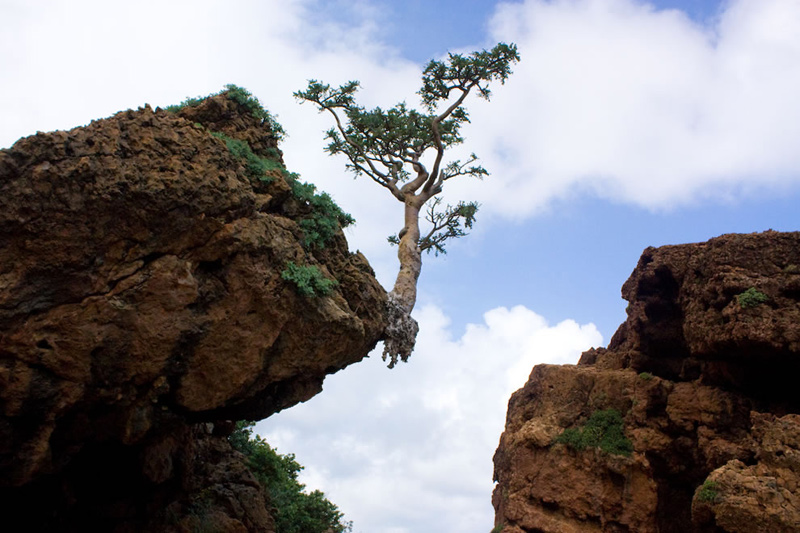
“Another glorious Socotri endemic specimen is the frankincense tree,” wrote the photographer. “Here deeply rooted on the edge of a rock. Highly sought for its aromatic resin, the frankincense was a source of huge wealth for South Arabian kingdoms since Ancient history.” Photo by Alexandre Baron
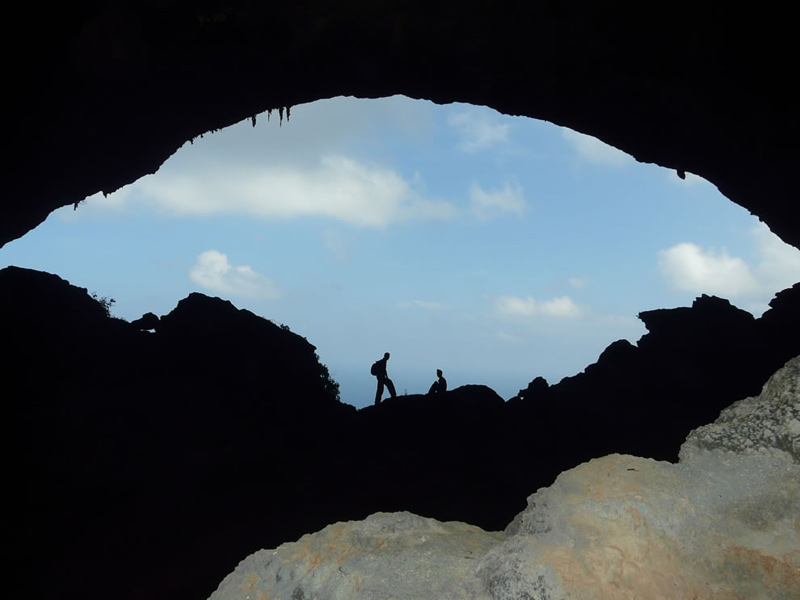
Hawk cave in Hala, east of Socotra island. There are many caves; Halah Cave has huge and fantastic stalagmites and stalactites; it is several hundred meters deep, going down into total darkness. Photo by Email4mobile
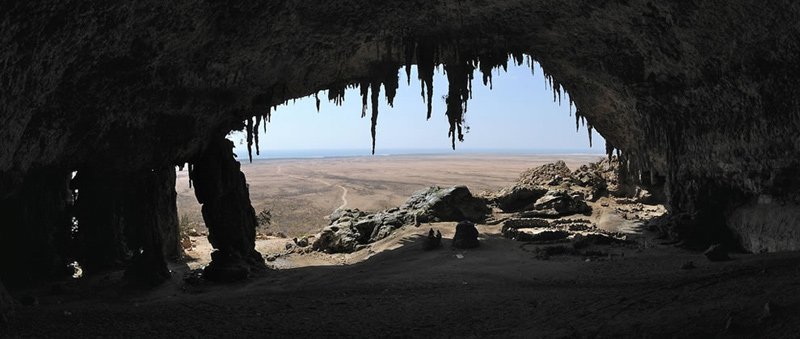
Inside Dogub cave, southern Socotra. In all, the island is about 78 miles (125 km) long, containing deep valleys, 5,150 foot (1,570 meter) high granite mountains, limestone plateaus, wind-scoured cliffs dropping into the sea, sandy beaches and lagoons. Photo by Stefan Geens
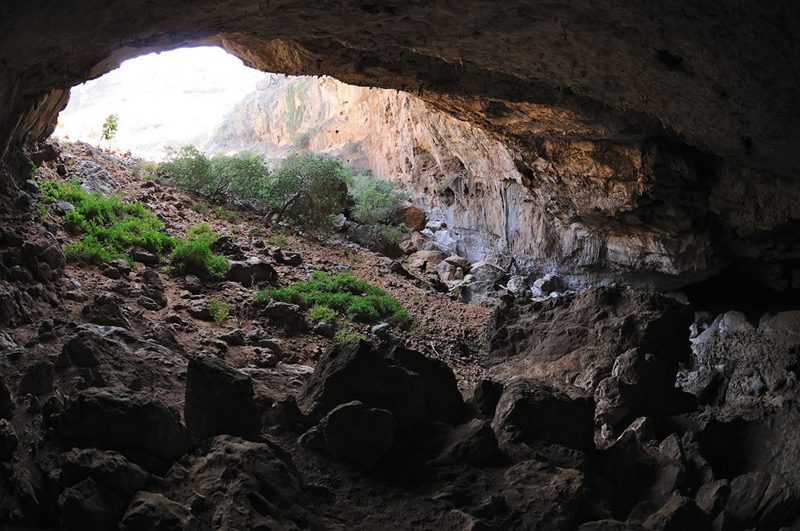
Wadi Geneb cave. The photographer noted, “I had left my guide at the top of the Wadi, so being here by myself felt very ‘at the end of the world.’ There were regular rock falls near the cliff face, and the cave got darker and darker as it lurched downwards. I was completely alone. I rested, ate some oranges, read, and then headed back up.” Photo by Stefan Geens
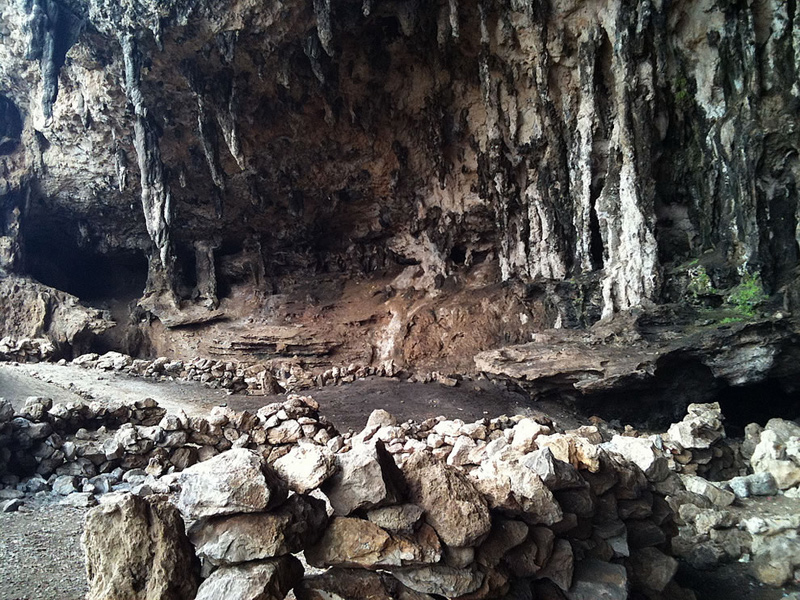
Another cave on Socotra. This “main island has three geographical terrains: the narrow coastal plains, a limestone plateau permeated with karstic caves, and the Haghier Mountains.” Photo by Maria Victoria Rodriguez
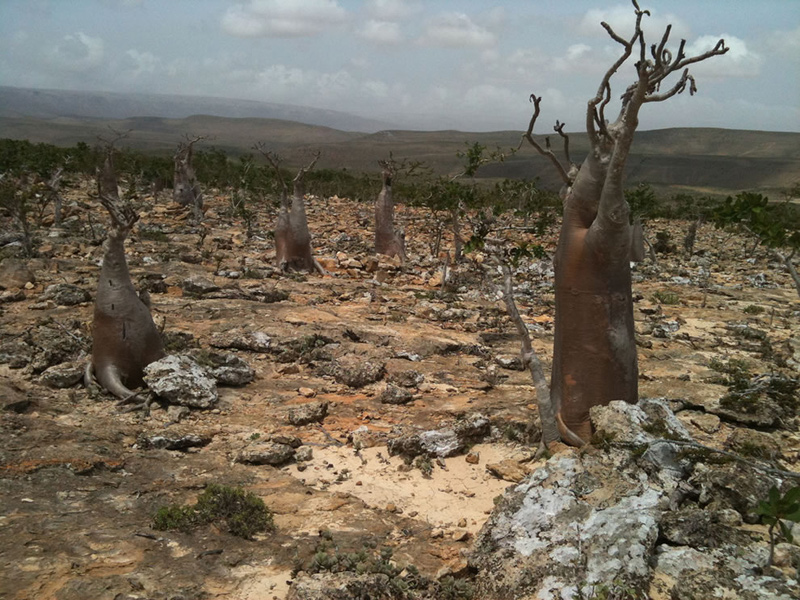
Another forest in Socotra’s hot, dry, harsh climate. Be safe if you go as it was reported, “The hospitals offer less than adequate service, but pharmacies are located around Hadibo.” Photo by Maria Victoria Rodriguez
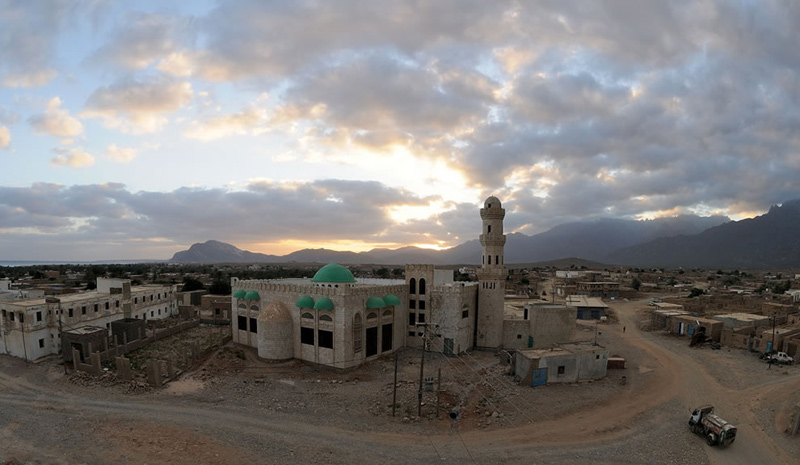
There are about 50,000 people living on the island as of the 2004 census. Hadiboh (Hadibu) is the most populated “urban” area with about 8,545 people. This is the “city’s” main mosque at dawn. Photo by Stefan Geens
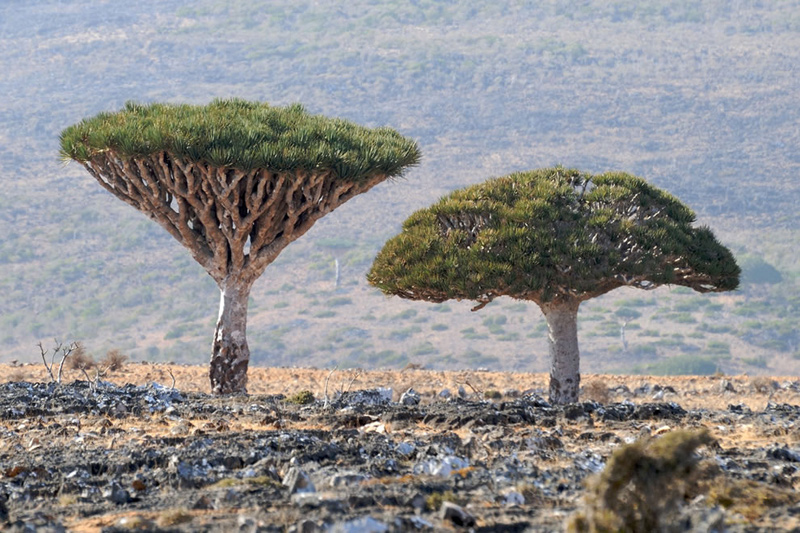
“Dracaena cinnabari” aka Dragon’s Blood trees on Socotra. Besides the odd upside-down umbrella shape, the tree “bleeds” red sap that, once upon a time, was believed to be the blood of ancient dragons. This red sap was used as a medicine and a dye, even as toothpaste in the 18th century. Around that time, the red resin was used as a varnish by Italian violin-makers. Today, it is also used by some for varnish, photoengraving and paint. Photo by Stefan Geens
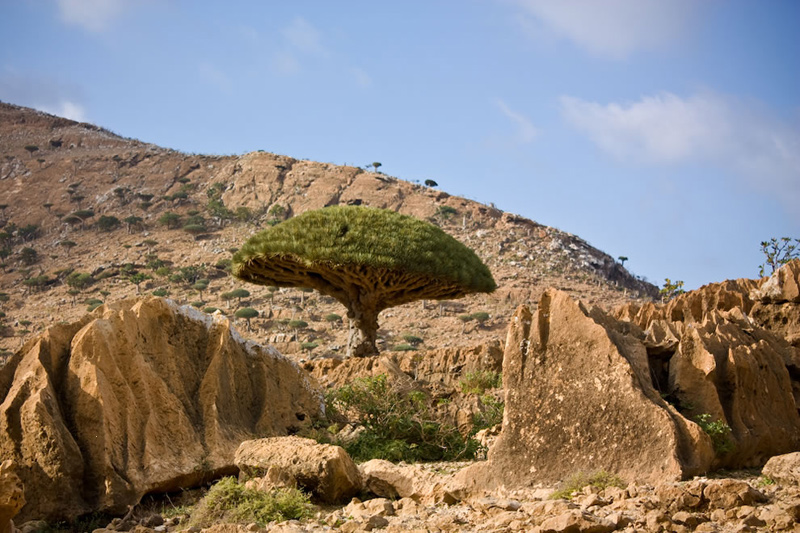
“When you see one,” the photographer said of the dragon blood tree, “you just want to hug it.” More tidbits of history regarding these natural wonders are that “any injury to the bark results in a deep red liquid exuding from the scar. It was compared to the ‘blood of Abel’ in ancient history. It is called Dum al Axwein, ‘blood of the two brothers’ Cain and Abel, in the present day Arabic language.” Photo by Alexandre Baron
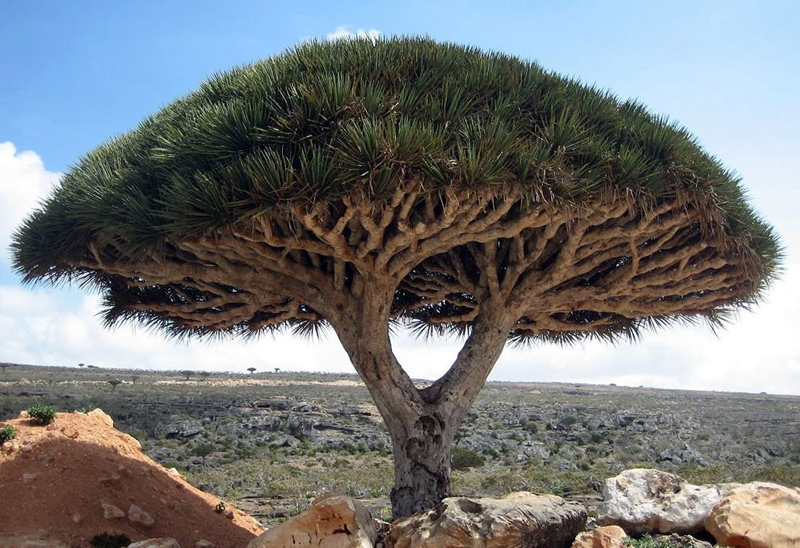
A Socotra traveler wrote on Vanity Fair, “There is much ancient lore about Socotra. Around 2000 B.C., frankincense was a hot commodity, especially to the Egyptians, who used it in their religious rituals and as an antiseptic. Frankincense grew in only three places on Earth, and Socotra was the hub of that trade—the Napa Valley of the frankincense industry. The Christians banned frankincense and other “aromatics” in the middle of the fourth century A.D. (in retrospect, I guess, the Three Kings probably should have brought something else). The ban put Socotra on an economic downhill slide that has continued ever since. The island still exists very much in isolation.” Photo by Boris Khvostichenko
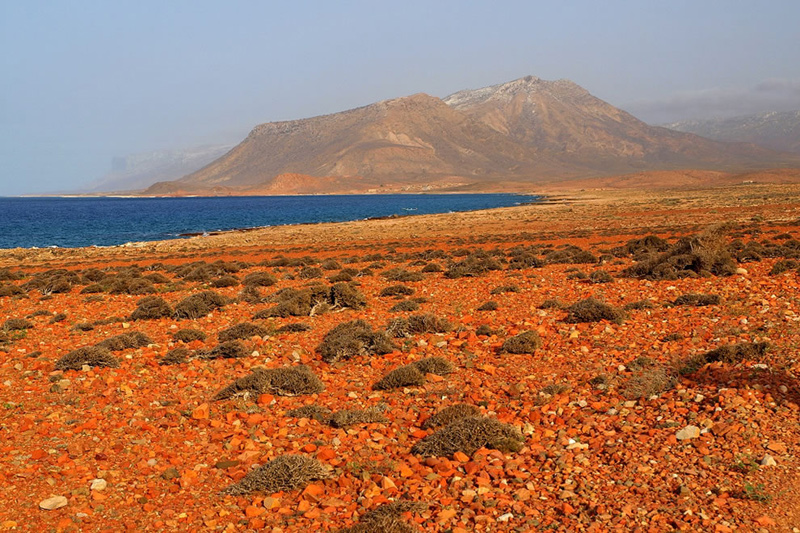
Soctra is the main island of a small archipelago of four islands. The three other smaller islands are Abd al Kuri, Samhah and Darsa. Additionally, there are small rocky outcrops that are uninhabitable by humans. The climate is hot and considered tropical desert climate and semi-desert climate with an average temperature of 78 °F (25 °C). Wikipedia states, “The monsoon season brings strong winds and high seas. For many centuries, the sailors of Gujarat called the maritime route near Socotra as ‘Sikotro Sinh’, meaning the lion of Socotra, that constantly roars – referring to the high seas near Socotra.” Photo by Martin Sojka
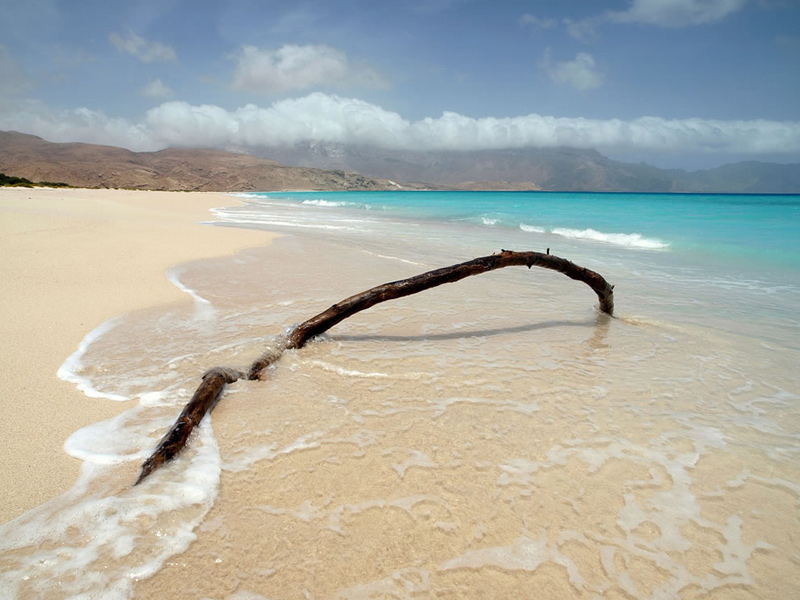
Socotra Island, Yemen, is a gem, and “island of bliss” that is an isolated getaway for adventurers and nature lovers who can trade-off luxury for getting off the grid. Photo by Martin Sojka
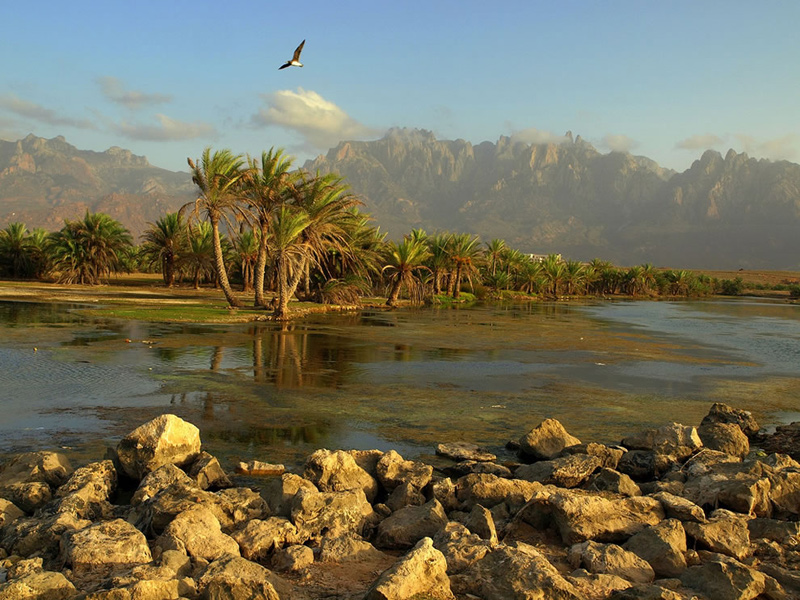
If you are looking for a luxurious vacation, then this is not the right location for you. However, people sometimes say they want to “get off the grid” and this would be an ideal place to visit if you love adventure and nature, and don’t mind “roughing” it a bit. Far away on what appears at first to be an oasis is Socotra Island, Yemen. It is believed that Socotra got its name from Sanskrit, meaning “Island of Bliss.” Others suggest the name was derived from Arabic and means “dripping frankincense.” It may be a bit of both, currently unspoiled by man, but most people know of Socotra as being “the most alien-looking place on Earth.” It’s like a whole another world, like a different dimension. Photo by Martin Sojka
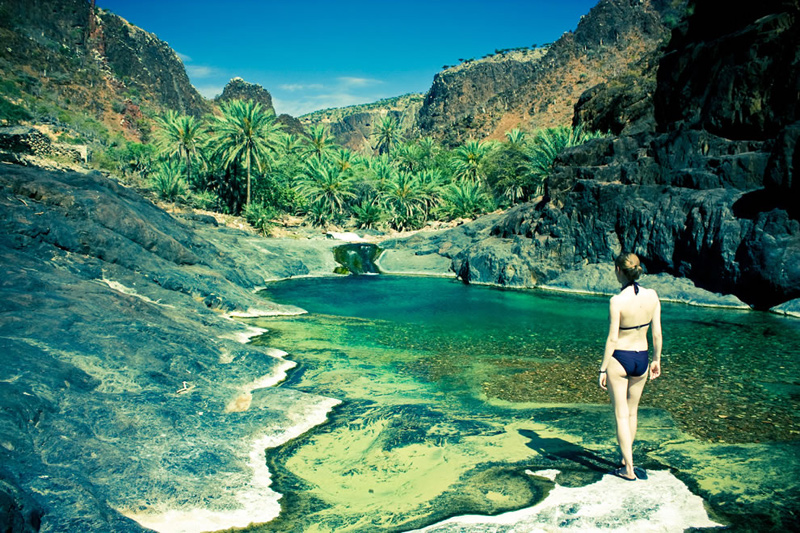
Socotra “oasis” makes this island look like an unspoiled paradise. No wonder it’s called the Island of Bliss. Photo by Alexandre Baron
